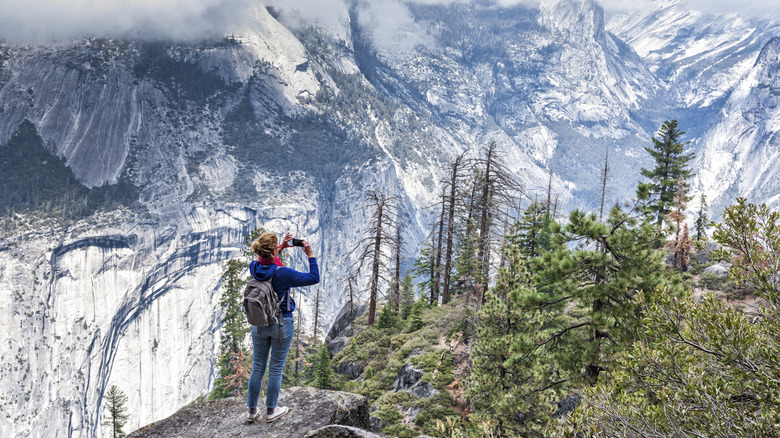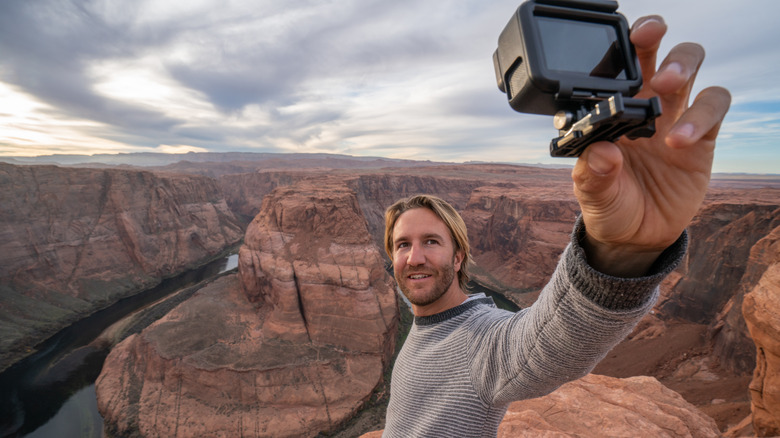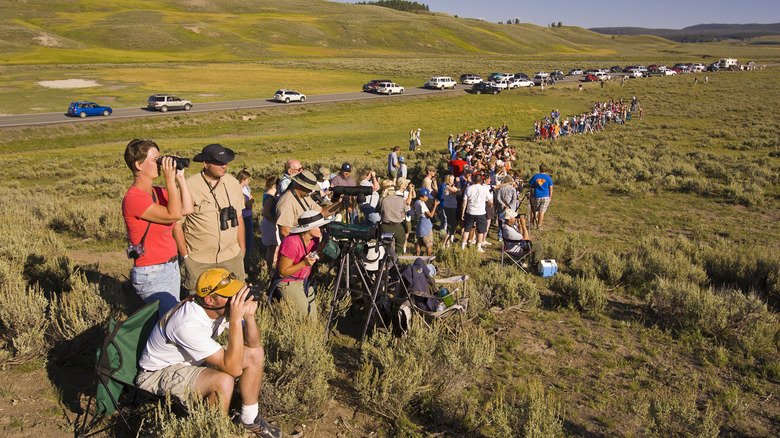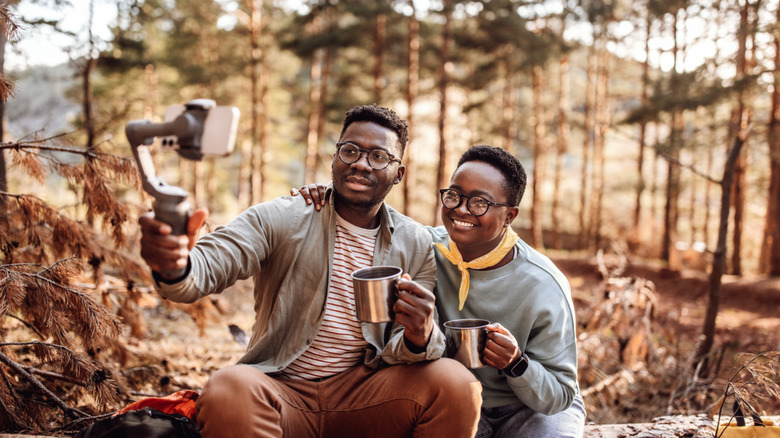The Popular Type Of Filming You May Not Know Requires A Pricey Permit In National Parks
How many of you have been inspired to visit our National Parks by a film or photograph? From the earliest days, the U.S. National Parks have inspired visitors to capture images of the landscape's beauty, the diverse wildlife, and themselves enjoying the great outdoors. In more recent times, social media has provided a steady flow of photos and videos of our National Parks in all their glory. If you've uploaded a film of the parks to your TikTok, YouTube, or Instagram, we've got some news. If your posts have generated some dollars, you might require a permit to film from the National Parks Service (NPS).
Since its inauguration in 1916, the NPS has been tasked with protecting some of America's most breathtaking lands. Its remit now extends to protecting these areas from professional and amateur videographers. The NPS website states, "Under federal law, all commercial filming that occurs within a unit of the National Park System requires a permit." That means that across the 429 units the NPS manages, including 63 National Parks, permits are required for those making money from their videos. That includes you, even if you only made a minuscule amount from Instagram this year.
Do you need a permit to film in National Parks?
The wording from the NPS is clear: "All commercial filming that occurs within a unit of the National Park System requires a permit." The page also details who needs a permit. Individuals and small groups require a permit if they are filming with the hope of generating income. The NPS mentions YouTube and TikTok as sites where footage might be posted to make money. Even if it's just you and your smartphone making a reel, you fall under NPS rules.
How much will it cost you? If you're filming alone or with one other person and only using a camera and a tripod, the permit costs $0. You may also need "liability insurance naming the United States as additionally insured" (yes, you need to insure the country) and to post a bond. Permit costs also climb steeply if you start adding people or equipment. It's $150 per day for up to 10 people, and the price rises incrementally to reach $750 per day for over 50 people. You can apply for a permit through the individual parks.
Still photography generally doesn't require a permit, except in certain circumstances, including using a model to sell something. (Animals, boats, and drinks are some of the things considered models) You likely don't need a permit for non-commercial filming, though you should check with the local park. Note that drones are banned in many national parks because of their impact on wildlife and people.
Why do you need a filming permit?
A 2017 incident involving independent filmmaker Gordon Price brought the NPS guidance on filming permits to many people's attention. Price shot parts of a documentary on NPS land and was subsequently issued a violation for filming without a permit. After Price challenged the charges in the courts, the DC Circuit upheld the Park Service's right to require permits. In 2022, the NPS reverted to its long-established policies on commercial filming.
Those in favor of the requirement of permits may point to several headline-grabbing incidents of dangerous or destructive behavior by social media influencers in the parks. In 2022, one influencer filmed herself hitting a golf ball (and then throwing the club along with it) into the Grand Canyon, resulting in outrage and legal trouble. In another golf-related incident, a comedian got into trouble for hitting biodegradable golf balls in Yellowstone National Park and posting the video to social media. This kind of bad behavior makes it hard to defend some social media personalities who use public lands with no thought for the land itself.
The positive side of influencers in the park
There is another side to creating content in the parks. Many influencers are challenging the traditional image of what an outdoor enthusiast looks like and encouraging their audiences to get outside. A 2018 report by The George Wright Forum indicated that people of color are less likely to visit national parks. Many on social media are trying to redress the balance.
Visits to national parks are also up, thanks to social media. A 2024 study published by PNAS reveals that parks with high social media exposure see visitation increase by 16 to 22% over parks that don't get the same kind of exposure. Importantly, revenue also increases, though so does the impact on the environment. This is a tricky balance for the parks. Many are also becoming crowded, though there are always lesser-known spots to escape to — even at the most popular sites.
The NPS doesn't want to stop visitors from using social media at the sites it manages. The Park Service runs incredibly beautiful (and often hilarious) Instagram and X, formerly known as Twitter, accounts. They also have advice for those who post on social media in the parks, writing that "posting about conservation, leave no trace, and safety helps spread and support the mission of the National Park Service." There's room for influencers to have a positive impact on the outdoors, but the law's the law, so get your permit if you want to film at an NPS-managed unit.



